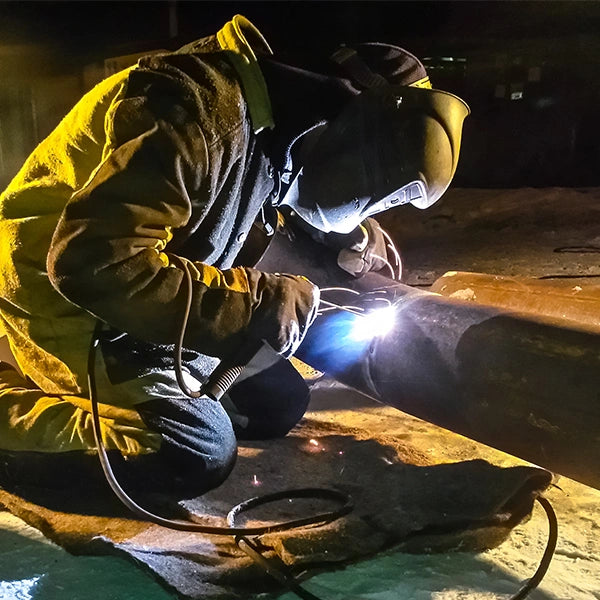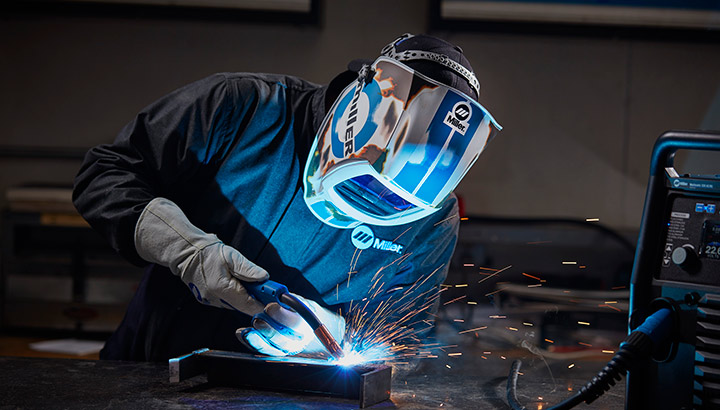Developing a Welding WPS: Step-by-Step Recommendations for Professionals
Developing a Welding WPS: Step-by-Step Recommendations for Professionals
Blog Article
The Ultimate Guide to Welding WPS Procedures: A Comprehensive Introduction for Welders
In the detailed globe of welding, Welding Procedure Specs (WPS) act as the foundation of ensuring quality, uniformity, and safety and security in welding procedures. Comprehending the nuances of producing, applying, and keeping track of WPS procedures is vital for welders wanting to boost their craft and meet market requirements. As we explore the different parts of a WPS and check out the intricacies of credentials and certification, we will uncover the important duty these procedures play in the realm of welding. Let's get started on a journey to decipher the intricacies and significance of WPS treatments in welding methods.
Significance of WPS Procedures
Comprehending the relevance of Welding Treatment Specs (WPS) procedures is important for ensuring the top quality and integrity of welded structures. WPS treatments serve as a roadmap for welders, detailing the necessary steps, parameters, and products required to attain an audio weld. By adhering to WPS standards, welders can guarantee consistency in their job, leading to trustworthy and structurally sound welds.
One of the key reasons why WPS procedures are crucial is their duty in preserving weld top quality and stability. Following the defined welding specifications and strategies detailed in the WPS aids avoid flaws such as porosity, breaking, or incomplete blend, which can jeopardize the stamina and durability of the weld.

Elements of a WPS
A Welding Treatment Spec (WPS) commonly comprises crucial elements that information the details demands for carrying out a weld, guaranteeing uniformity and high quality in the welding process. The crucial parts of a WPS include crucial variables such as base steels, filler steels, preheat and interpass temperature levels, welding procedures, shielding gases, welding placements, and post-weld warm treatment needs.
Base steels refer to the products being joined, while filler steels are utilized to fill the void between the base metals throughout welding. Preheat and interpass temperatures are vital for controlling the heat input and stopping issues like splitting or distortion. The welding procedure describes the details method to be used, whether it's gas steel arc welding (GMAW), secured metal arc welding (SMAW), or one more technique. Protecting gases secure the weld pool from climatic contamination. Welding placements define the orientations in which welding can be executed. Post-weld warmth treatment may be needed to alleviate stress and anxieties and enhance the weld's homes. A thorough understanding of these elements is important for creating a reliable and extensive WPS.

Credentials and Accreditation
Having actually developed the crucial components of a Welding Treatment Specification (WPS), the emphasis currently moves towards the crucial elements of certification and certification in welding techniques.

Certification, on the various other hand, is the formal acknowledgment of a welder's qualifications by an appropriate certification body or company. Welding qualifications are generally based upon the specific welding procedures, products, and settings a welder is certified to deal with. Holding a legitimate welding qualification shows that a welder fulfills market standards and is competent to carry out welding tasks to the needed requirements.
Producing a WPS
To develop a Welding Treatment Specification (WPS) that fulfills market requirements, careful factor to consider of welding processes, materials, and functional parameters is essential. The initial step in producing a WPS is to recognize the welding procedure to be made use of, such as gas steel arc welding (GMAW) or protected steel arc welding (SMAW)

Carrying Out and Keeping Track Of WPS
Upon settling the comprehensive Welding Treatment Requirements (WPS) that meticulously details welding processes, materials, operational parameters, and top quality guarantee actions, the focus moves to successfully applying and checking the well-known treatments. Implementation entails ensuring that all welders entailed in the task are familiar with the WPS and follow it diligently during the great post to read welding process. Efficient implementation and surveillance of the WPS are important for ensuring the honesty, stamina, and security of the bonded joints, eventually adding to the overall success of the welding project.
Conclusion
To conclude, understanding and complying with Welding Procedure Requirements (WPS) is important for welders to guarantee quality, uniformity, and security in their job. By understanding the components of a WPS, getting proper certifications and certifications, creating thorough procedures, and applying and checking them effectively, welders can improve their abilities and proficiency in welding methods. Sticking to WPS procedures is essential for creating high-grade welds and conference sector standards.
In the elaborate world of welding, Welding Treatment Requirements More Help (WPS) offer as the foundation of ensuring quality, consistency, and security in welding operations. The welding process lays out the specific method to be utilized, whether it's gas metal arc welding (GMAW), secured steel arc welding (SMAW), or another technique.To develop a Welding Procedure Spec (WPS) that satisfies sector standards, cautious consideration of welding procedures, products, site here and functional parameters is necessary. The initial action in developing a WPS is to identify the welding procedure to be used, such as gas steel arc welding (GMAW) or protected metal arc welding (SMAW)Upon wrapping up the detailed Welding Treatment Specification (WPS) that diligently details welding procedures, materials, functional criteria, and high quality guarantee steps, the focus shifts to properly carrying out and checking the well established treatments.
Report this page